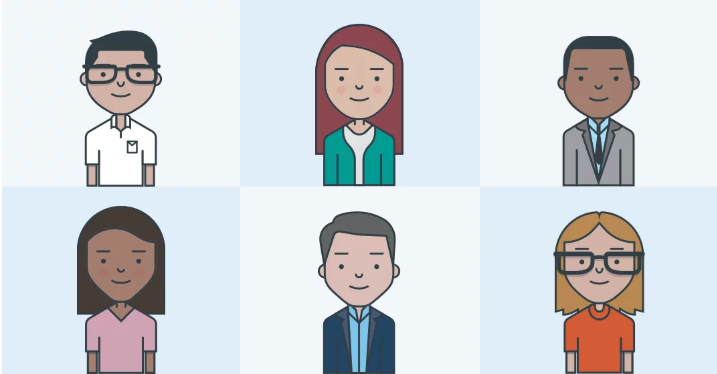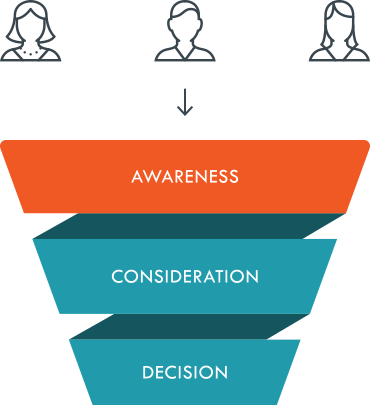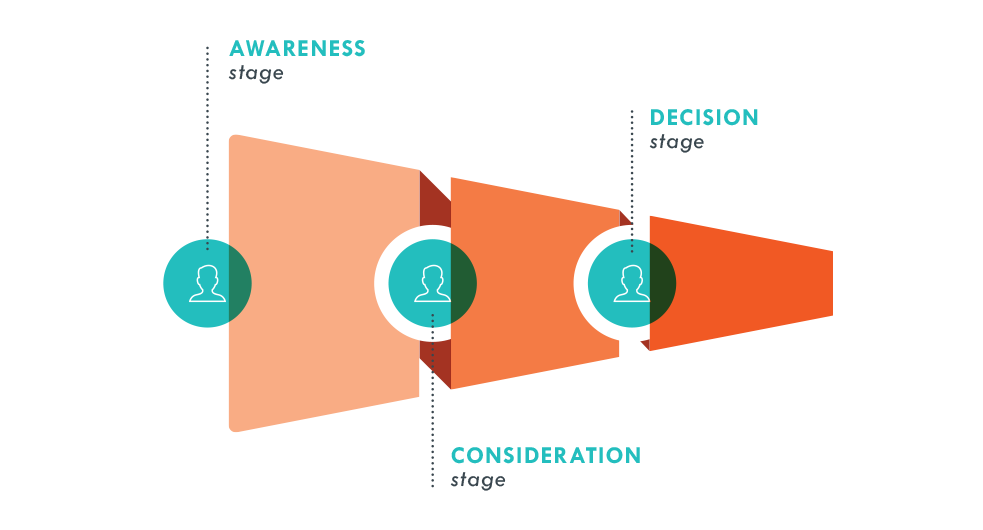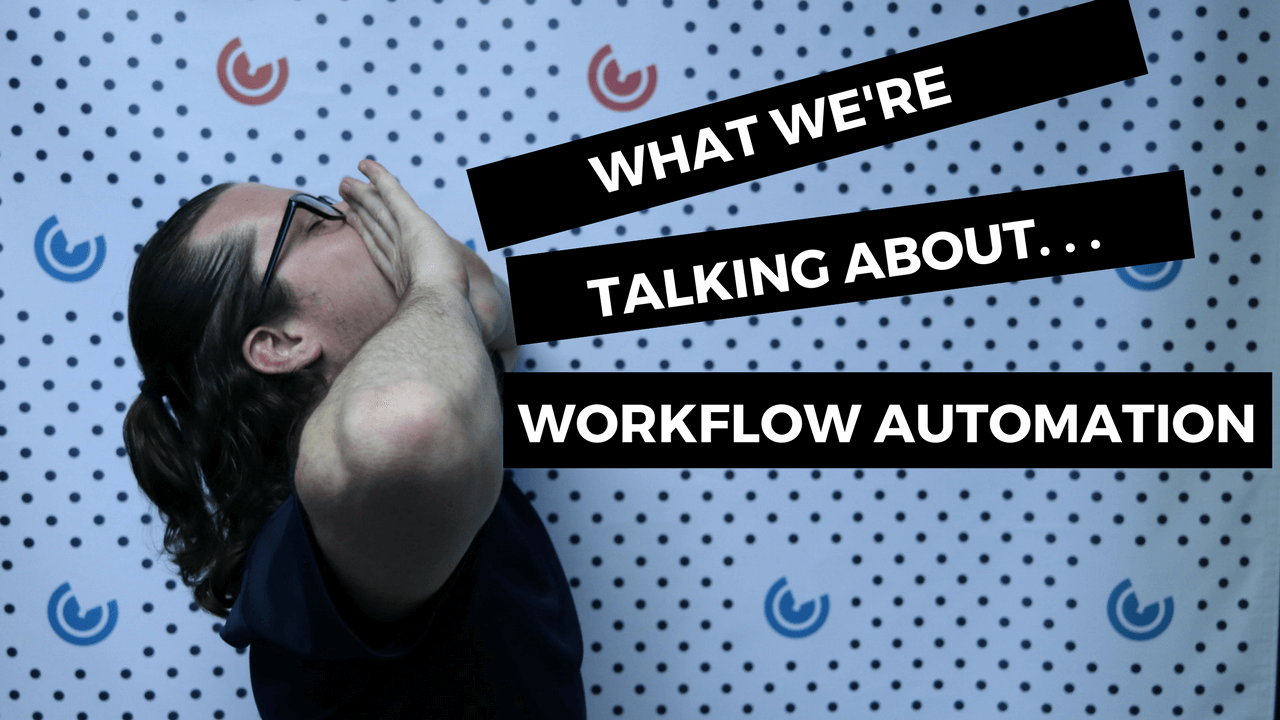The Lowdown on Inbound Marketing
Over the years society has evolved quite a bit. With that change, the way people structure their lives has changed as well. In today’s world people...
I know what I am looking for, and would like to chat.
A team of data-driven marketers obsessed with generating revenue for our clients.
Because the proof is in the pudding.
At Campaign Creators we live by three principles: Autonomy, Mastery, Purpose.

We’ve realized that there are so many mistakes to avoid when trying to make and use buyer personas and even more things you need while going through this whole process. It’s a lot so hopefully everything we cover here can help solidify the more vague and abstract pitfalls so you’re well versed to properly navigate through these stages in the long run.
A buyer persona is a general representation of your ideal customer. As marketers, we don’t want to target just anybody, so we do everything to understand, learn, and adapt to that persona. What gets them up in the morning? What keeps them up at night? This way, we can focus our efforts to be more in-tune with anything crossing their minds that might ultimately help or hurt a buying decision and reflect it within our marketing.
So what’s the difference between buyer personas and a target market? Let’s look at the differences in old-school demographics and how psychographic information makes these personas so effective.
Not much information is offered when it’s the bare minimum demographic information provided. So what we do is add things like pain points, desired experience, values, goals, and objections by utilizing socio-economics and psychographics to give greater personable insight to Mary and Sam.
As you can see, buyer personas are a 1-to-1 conversation and more specific than target marketing. The reasoning behind this is also the end goal: to understand your potential customers at a much more tangible level. When things are general, it can be vague and harder to understand certain needs. After all, people aren’t mere projections of their demographics, no matter how specific those parameters may be.
Before diving into the research needed, it’s important to understand why some buyer personas fail. Try to avoid:
With these things in mind the next big question is how to approach the research needed to form buyer personas. There are so many different sources to draw from so it can be an overwhelmingly complex process. A good place to start is by identifying general demographics, pain points, desired experiences, values, and goals. Here’s a step-by-step breakdown of how to get started:
Just to give an example, we have a client who creates software for manufacturers to make that particular process more efficient. Because of the inherently complex topic space, it was difficult to wrap our brains around what their target persona would be. I was fortunate enough to be one of the people leading the calls to research the development of a sales persona, which took me to calling some of their lost leads.
Two of the biggest things that we learned was that people weren't getting the proper education to truly understand what the value offering of the software was and that people had an affinity towards videos. With videos becoming very popular and Google ranking them more highly, it became apparent that we needed to launch a video strategy that enabled certain topics to be approached as an educational journey.
With the initial research out of the way, the next thing I think about is what the lifetime value of a particular customer is. Luckily we actually have an equation here for that. We’ll be finding 3 different numbers to multiply in order to get the lifetime value:
Average value of a sale • number of repeat transactions • average retention time
= LTV
By determining the lifetime value, you’ll be thinking long term and not restrict yourself to a single variable. This deeper insight ties closely with another gem called evangelists. Evangelists play a greater role in propelling more people through the TOFU (top of the funnel) by spreading the testimonials to their relevant networks. Because of this, they have a higher lifetime value than just a one-time customer.
In general, 3-5 personas will cover about 90% of your customer base. Let’s say we disregard that 10% and focus on your most common consumers. By creating a few personalized messages you’ll reach nearly all your customers or clients on an individual level. They will feel as if you’re speaking to them directly, all because you took the time to create a few personas.
More often than not, people get confused about where to hand off a persona into the buyer’s journey. It admittedly is a very fluid process and sometimes there's not a strict line between a sales and marketing process.
A key thing to note is that consumers will have already done about 70-75% of their buyer’s journey before they even engage with the salesperson. So what it boils down to is whether or not they’re a researcher vs. decision maker.
Now let's get into the more nitty-gritty functionalities of personas. What exactly is the purpose of personas and how are we utilizing them for the buyer's journey?
Here is a quick representation of a funnel.

This is a pretty standard funnel that describes the buyer’s journey. The different stages of a persona as they work their way through the buyer’s journey are A, C, D, and E.
First for the basics—A, C, D. Awareness, Consideration, Decision. These are different stages that a persona works their way through until reaching the Decision Stage of whether or not to purchase a certain product or service.
Now, this E is interesting because these are some of the most important people to target as part of your marketing process—the evangelist. They are the ones who may not only have a network of their own, but also synergistic contacts in the same industry that might allow you to reach out to and leverage their network. Evangelists are kind of the “golden goose” here and we really want to target and empower them to fully tap into their own networks.
The end goal here is to ultimately drive more people through the top of the funnel.
Keeping track of how a buyer persona navigates through a buyer’s journey is necessary to successfully use a buyer persona. The basic thought process that leads these personas to the next stage of the sales funnel will also help you develop a deeper understanding of your customers. So let's practice A, C, D on an example first! In this case, imagine that you are sick.
In the awareness stage, I know that my stomach and head hurt. Maybe I also have a body ache and the chills. I'm not 100% certain what’s wrong with me yet, but I do have the awareness that there is an issue.
In the consideration stage, I have basically established I probably have the flu.
At some point, I would have had an educational journey that I go through to really understand that I'm now in the consideration stage because I know what my challenge is and what ails me. From here there are a couple different initial decisions that I encounter.
Do I go to urgent care?
Do I go to the hospital?
Do I go to WebMD?
These are some of the questions that I have as I move through the Consideration Stage, in order to hopefully proceed into the Decision Stage.
So I finally move to the Decision stage where I am aware of these options and begin considering them.
In the context of sickness, it may be along the lines of: Do I go to Scripps Hospital? Do I go to a hospital like Kaiser? Those are some of the decisions that I have to make.
Then if I convert and am happy with the service at a certain hospital, I become an evangelist.
As you go through these steps, make sure to be looking at the different channels because—depending on the person, industry, and what we're selling—you might have to speak to people in different ways. The classic example is Facebook vs. LinkedIn.
Facebook is something that everybody and their mother is on. A lot of times your grandma may be the most active person on your social feed. LinkedIn is a lot more oriented towards colleagues, coworkers, and people who should be a little bit more educated within your process and understand your space.
So if you’re targeting a prospect, and depending on what you're selling on Facebook vs. LinkedIn, you might want to speak to them in different terms.
You are now equipped with the knowledge of the importance, development, and process of buyer personas. But what good is this without being able to properly convert leads to sales? I think the best way to show this is to go through the entire process using a more relevant example than being sick.
Let’s take CRMs (customer relationship management software) into consideration. There are the big boys in the space, like Salesforce, and there are the smaller new entrants, like someone along the lines of HubSpot. A lot of people are going out and creating these CRMs.
Here are our two personas:
Sales Guy Sam. Sales Guy Sam is about 45 years old, makes roughly $150,000/year and resides in sunny San Diego. He is very concerned with the sales process becoming more efficient and, at the end of the day, closing more sales. Making more money is Sam’s number one concern. How can he do that? Well, that’s what we need to address.
And then there is...
Olive. Olive is the VP of Operations at Sam’s company and is what we would consider a sales persona. While Olive is very in-tune with all the moving parts of the business, she is more concerned with things along the lines of pricing and how the technology or the new CRM integrates with tech that they currently have. We know that Sam is the researcher—he has that pain point of “I want to sell more. I want to be more efficient. And maybe some technology could help get me there.”
A buyer persona’s challenges and educational journeys are going to be different depending on if they are a sales or marketing persona. So you can start to see how we might target Sam and Olive differently.
We really want to put into context how these sales personas relate to the buyer’s journey, so let’s think about the previously mentioned A, C, D funnel structure.
Going off of Sam, we can now create theoretical assets to communicate and hopefully move him throughout that funnel going from the Awareness to Decision stage.
So the first asset that we create in order to attune or align with Sam would be an eBook on “How to Create an Inbound Sales Process”.
We know that the buyer’s journey is shifting and that a lot of people have done the majority of research up front. So we want to basically say, “Hey Sam, how are you utilizing this new inbound sales process? Here’s a quick eBook that walks you through the steps to do so.”
Sam would then consume the initial eBook and want something more to consider his different options.
Well, we do so with an industry product guide to begin setting the stage. Remember, you don’t want to be too sales-y initially. Simply summarize what your objectives or goals are as part of this guide. A lot of times we'll introduce different options, and then create some sort of a graphical comparison chart. Anything to give Sam the ability to clearly see the differences in features, characteristics, and everything else.
Finally we're talking about a piece of technology here. What would work well as a bottom of the funnel offer?
It’s important to note that BOFU (bottom of the funnel) offers are different for each industry. If it’s a consumer product good, maybe there’ll be a really good offer like a 10% off coupon.
But as we know, we’re in the business-to-business (B2B) space, talking about a customer relationship management (CRM) software. The two main offers that typically come up, in this case, are a demo or a trial. Whereas a demo is usually more of a guided demonstration, a trial is hands-on and actually utilizes the software independently.
So how do we decide for Sam whether a demo or a trial would be a good offer to have? I would choose trial over demo because I know that Sam is:
So we want to make sure that we get Sam on the software to try it!
With this process in mind, you’ll hopefully have the right tools and mindset to construct a buyer persona that not only best fits your industry but also helps increase quality leads and sales.
It's easier than you think! Here's some bonus tried and true hot tips to help personalize your sales funnel in the best way possible.
Studies even prove how well emails work for marketing. Seems a little strange, right?
Nearly 90% of people in the United States are still using their email accounts daily and it's estimated that an email reach is nearly three times more effective at getting purchases than a social media reach.
Do not skip email marketing. But don't skip doing email marketing well either.
Here are a few tips on how to create a great email marketing campaign:
The best way to build traffic is to use social media. Building traffic is a big part of the sales funnel, as it brings in an audience to consider whether or not they want to be your customer. And social media is usually completely free to use for marketing.
If your brand does not have a social media account, get one immediately! Get several across different social media platforms!
Explore which social media platforms are best for your brand.
For example, if your product or brand is very visual, try marketing via Instagram. Here is a great example of Instagram marketing.
If your brand is focused on instructional items, DIY kits, cooking, or fashion, making a Pinterest account is a good way to get your products to go viral.
Many marketing pros also love YouTube. This platform is great because it is the second most accessed search engine currently (Google, of course, is number one), and videos on the site accumulated thousands of comments every day. Creating videos to promote your brand on YouTube could be a fantastic choice.
Facebook and Twitter should also be staples for any brand.
Business 101. A call to action is a major sales funnel component—it is the thing that officially makes a prospective customer an actual first-time customer. You want to get your potential customers to do something, usually to click that "buy" button or to look at what items are part of a big sale.
This CTA button has to look good and function well.
In an ad campaign, this means that you probably should not make your call to action button difficult to find, too light, or linked with poor wording.
Try:
You can seek out professional marketing companies that create conversion-friendly sales funnels for you. If you want to invest in getting the job done right, try this option.
Getting quotes from these companies ahead of time is a great way to compare pricing and decide if having your sales funnel taken out of your hands is a good idea.
Feeling like this wasn’t enough about buyer personas and want a more structured way to put this information to use? Be sure to check out our Buyer Persona Workbook to dive deeper into understanding how to better form and use a buyer personas.

Over the years society has evolved quite a bit. With that change, the way people structure their lives has changed as well. In today’s world people...

When someone first asks you what the product/service is that your company sells, you are ready to explain it to them. But is your website? No matter...

We all know time is money. In fact, most businesses are deadline driven, which means that the faster tasks get done, the more things will be...